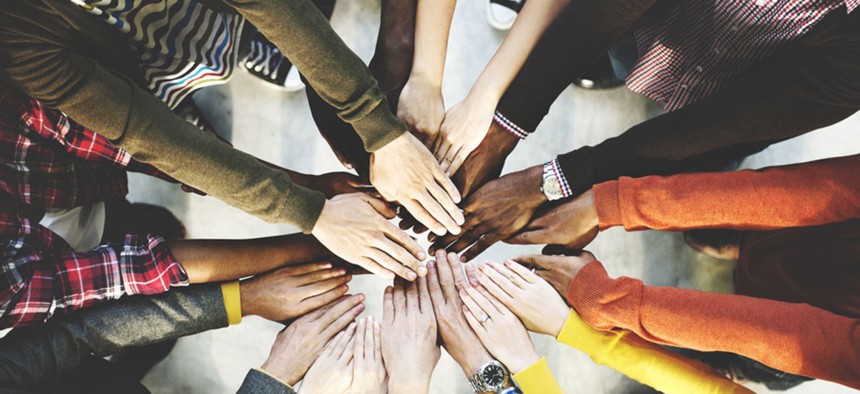
Rawpixel.com/Shutterstock.com
Making the Brain Less Racist
Most people are biased against other races, but some odd psychological interventions can help.
Is there any way to improve race relations? Re-watching the 1993 film The Joy Luck Club might help a bit. In one study, white people who watched the movie while empathizing with its characters—all strong, complex Asian-American women—were less likely to be biased against a group labeled “them” in a computer game, as opposed to “us.”
Or, we could have white people play dodgeball on a teams full of sportsmanlike African Americans—that too, has shown to reduce bias.
These are just a few examples of the myriad ways psychologists are trying to hack the human brain to be less prejudiced.
Most people harbor biases against other races and genders, whether they admit to them or not. And as the events of recent weeks (and frankly, centuries) underscore, societal bias against African Americans is perhaps most pervasive and harmful of all.
African-Americans face discrimination in almost every facet of life. People with black-sounding names are less likely to be invited for interviews by prospective employers or even to stay in apartments by AirBnb hosts.
White people shown images of a black 5-year-old boy, and then a toy, are more likely to miscategorize the toy as a weapon than if they see a picture of a white boy.
According to the Implicit Association Test, most white Americans are biased against black people, as measured by the amount of time it takes them to associate positive words with images of black, compared to white, people.
So how do you undo biases that are so ubiquitous that even very young children buy into them, yet so dark that few people will acknowledge them?
The most effective strategy relies on subverting these “implicit associations” between African Americans and negative thoughts. When a team of researchers tested 17 racial-bias reduction interventions, only eight of them proved effective. To be successful, an intervention had to not only link black people with positive qualities, it had to paint white people negatively.
Meanwhile, strategies that relied on making the participants think about racial-justice issues or try to understand the perspective of a black person had essentially no effect.
In the most effective intervention, the largely white participants read stories in which a white person sadistically attacked them while a black person valiantly saved them. Feeling allied with, even dependent on, someone of the opposite race helped reduce the participants’ bias ratings by 48 percent.
That appears to be the rationale behind the Fair & Impartial Policing training program. It involves confronting officers with threatening and non-threatening people of different races and ethnicities, with the goal of erasing the officers’ mental connections between race and threat level.
“If we did that over and over again, the officers would learn that ‘I need to not focus on demographics,’” Lorie Fridell, a criminologist at the University of South Florida and the developer of the training, told The New York Times.
Some interventions appear to be counterproductive, reinforcing prejudice even as they tried to destroy it. Michelle Duguid of Washington University in St. Louis has found that telling people that negative stereotypes about women are very common actually led them to stereotype women more negatively. If everyone is sexist, after all, why shouldn’t you be?
Finally, trying too hard simply not to seem racist might actually poison your interactions with people of other races. In one recent study, people who focused on coming across as unbiased in a conversation with someone of a different race reported having more anxiety about the interaction, and therefore more negative feelings toward people of that race.
Of course, it’s terrible that seemingly the best to make white people feel more positively toward toward black people is to make them dislike other white people (at least temporarily.) Then again, brains and their tendency to leap to erroneous conclusions are kind of terrible. And it’s also less terrible than the profound inequality of attitudes that African Americans have been facing for generations.






